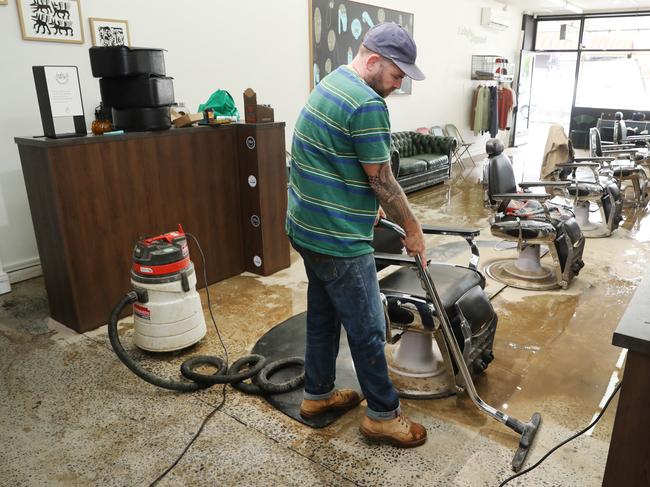More Australians unprepared for wild weather as insurance claims climb
Aussies are copping lousy weather, wreaking havoc on our lives. But there’s one simple error many are making that could save us thousands of dollars.
Environment
Don't miss out on the headlines from Environment. Followed categories will be added to My News.
Exclusive: Insurance claims have hit record levels because of the increasing frequency of extreme weather events — and homeowners’ reluctance to check the outlook.
At a time when it’s never been more important to prepare for the worst, the failure to do so is being traced back to the increasing number of Aussies who have stopped looking at weather forecasts.
Our climate has been so lousy in 2022, one in four of us are no longer tuning in to find out what tomorrow’s weather will bring.
And you can see why: it basically never stops raining. Bureau of Meteorology records show there was not a single dry day across greater Sydney and greater Melbourne in September, while Adelaide had just one day of zero rainfall. Brisbane managed eight dry days.
Allianz Australia found almost one in five Aussies (18 per cent) say the constant poor weather is making them feel fatigued, and a quarter (25 per cent) say they no longer tune in to the weather report.

But it goes beyond mere feelings of discontent: according to Allianz, ‘weather fatigue’ is leading to a rise in the number of people who have switched off and are no longer making adequate preparations for extreme weather events.
“Catastrophe claims are up about 81 per cent in the 2022 [severe weather] season, compared to 2019, and of those about 38 per cent of the home claims are related specifically to weather,” said Mark O’Connor, Allianz’s national manager for claims.
“We’re seeing people become blasé to the weather,” he said.
“It’s stopping them from preparing themselves and their properties and vehicles against potential losses.”
While an insurance policy will generally still “kick in,” regardless of a homeowner’s level of preparedness, Mr O’Connor said, many were finding severe weather incidents so much worse because they didn’t take simple precautions like storing loose items, clearing gutters, sealing up leaks, or turning off the gas and electricity during an extreme event.
“It’s not about the insurance company not kicking in. It’s about reducing the impact on the individual as much as possible so they can recover much more quickly,” Mr O’Connor said.


While many Australians are feeling despondent about the continuing bad weather, the Allianz research also picked up a strong degree of scepticism about forecasts, with 38 per cent saying they are “usually wrong”.
Some survey respondents said “looking out the window” was more reliable.
Psychologist Jaimie Bloch said the weather had increased the feelings of restriction Australians had felt since the Covid-19 pandemic.
“It’s adding to the layers of the last two years and because of that we’re feeling fatigued,” she said.
Being in denial about the weather by not tuning in to weather forecasts was a “defence mechanism,” as people were wanting to avoid things that cause them stress, Ms Bloch said.
“Indifferent and passive attitudes are emerging, causing people to become more
reactive than proactive. It is important that Australians do not let these attitudes affect their
judgment and approach when it comes to life admin, such as preparing the home for extreme
weather,” she said.
The cost of extreme weather was laid bare in a recent Insurance Council overview.
Eleven catastrophes have been declared since 2019, driven in large part by the La Niña weather pattern, incurring $13 billion in damages.
The February/March floods in NSW and south East Queensland cost $5.2 billion, while severe storms in SA, Victoria and Tasmania in October 2021 cost $848 million.
A total of 380,760 claims were made in the year, the council found, with the average claim being $17,000.
More Coverage
Originally published as More Australians unprepared for wild weather as insurance claims climb





